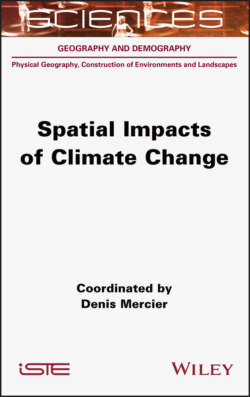Читать книгу Spatial Impacts of Climate Change - Denis Mercier - Страница 28
2.4. Melting of the Earth's cryosphere 2.4.1. Melting ice sheets 2.4.1.1. The melting of Greenland
ОглавлениеBetween 2006 and 2015, the Greenland ice sheet lost ice mass at an average rate of 278 ± 11 billion tons per year (IPCC 2019). This melting represents an equivalent of 0.77 ± 0.03 mm per year in global sea level rise. Melting mainly affects the surface of the ice sheet (see Figures 2.6 and 2.7).
Figure 2.6. Total extent of melt day, or sum of daily melt area during the 1999-2019 melt season in Greenland. For a color version of this figure, see www.iste.co.uk/mercier/climate.zip
(source: NSIDC)
Since 2000, the Greenland ice sheet has experienced a general increase in melting, with a melt day area for 2019 totaling 28.3 million square kilometers. Melting has been observed over nearly 90% of the island on at least one day, even reaching the Summit station and much of the high-altitude areas. It was particularly intense along the northern edge of the ice cap, where, compared to the average from 1981 to 2010, melting occurred on an additional 35 days. The number of melt days was also slightly above average along the western flank of the ice cap, with about 15 to 20 more melt days than average. In the south and southeast, the melt was slightly below average within a few days.
This melting is caused by warm, moist air flows associated with active summer and winter cyclogenesis, from the south or southeast. These mechanisms result in increased cloud cover, low-level liquid and snowy precipitation at high elevations in the ice sheet, better absorption of long-wave radiation, and a decrease in albedo in the south and near the coast, accelerating the melting of the snowpack (Oltmanns et al. 2019).
Figure 2.7. Number of days of melt at the surface of Greenland's ice sheet between January 1 and November 17, 2019. For a color version of this figure, see www.iste.co.uk/mercier/climate.zip
(source: NSIDC, Thomas Mote, University of Georgia)
